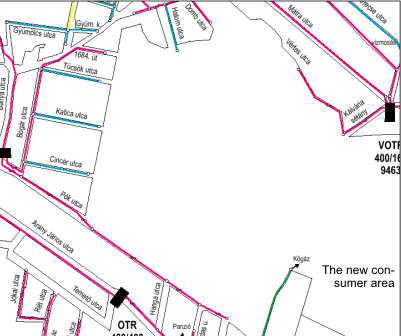Case Studies | Coloration Of The Network
In case of a new electricity demand without the knowledge of the free capacity of the existing network if the question cannot be decided on the face of it - lacking of better solution - a new line or a new transformer station should be built. Lacking of appropriate tools co-operation possibilities of transformer districts cannot be taken into account so the network development decisions cannot be optimal. Having our highly computerized method especially developed for examination of the co-operation possibilities of the transformer districts we optimize the supply of electricity demands, the operation of the existing networks and the network development decisions with strategic plans making also possible an overviewable control of the network investments.
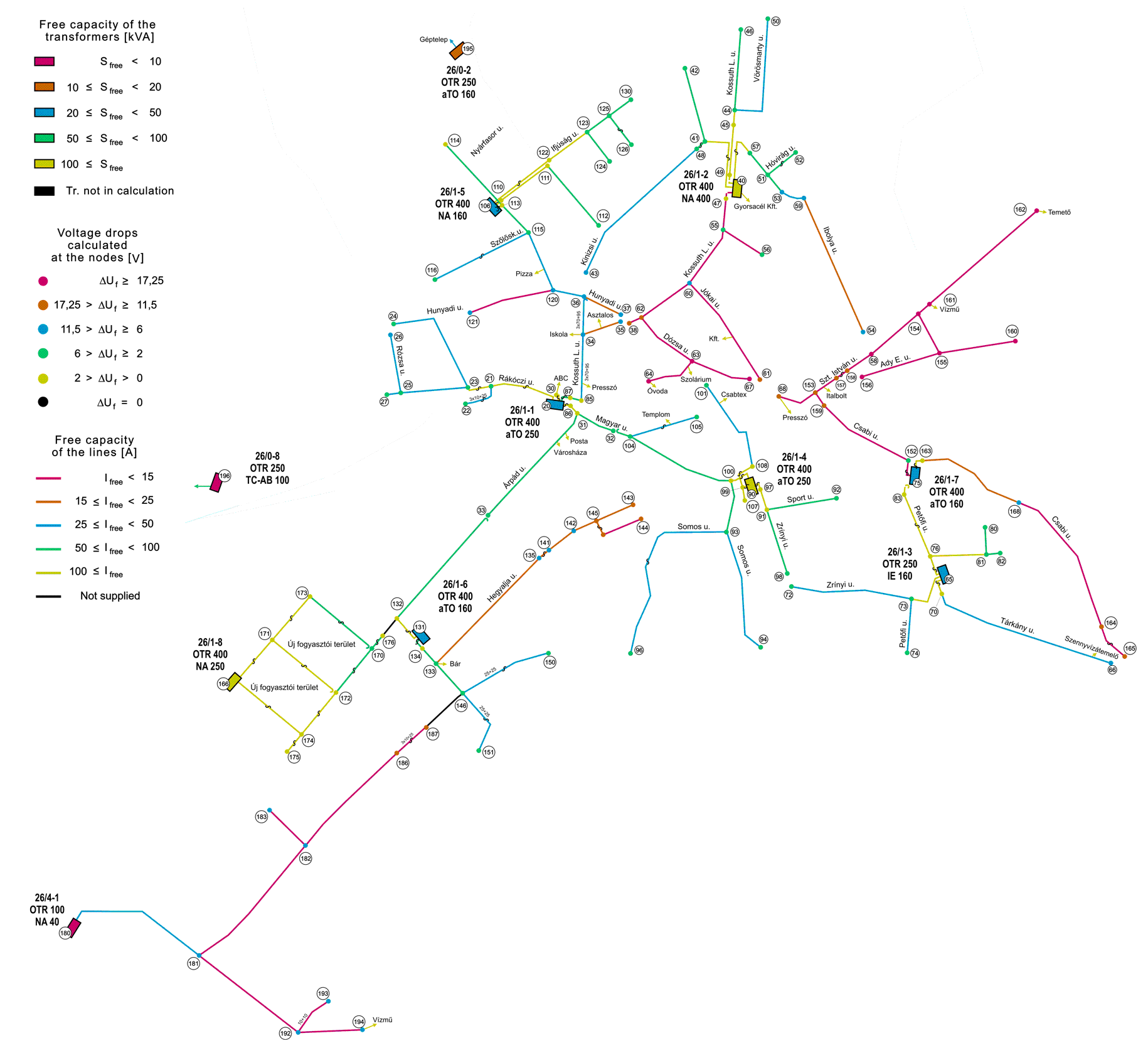
Fig. 1 Overviewable presentation of the free capacity of the network and voltage drops at the nodes on a whole network
1. What is a strategic (long term) plan of a low voltage network?
A plan that examines the low voltage network as a co-operating system and minimizes the costs of the short term developments and losses.
2. What advantages can be achieved applying it?
- It gives a picture about the present state of the network(e.g.. wrong voltages, high currents, wrong mechanical condition, free capacity).
- It shows the optimal switching configuration of the network where the losses on the branches are minimized at the present and the short term planned states of the network that also ensures better voltages, bigger reserves and utilization of the network beside minimal investment need.
- It gives the construction and reconstruction time schedule minimizing the expenses.
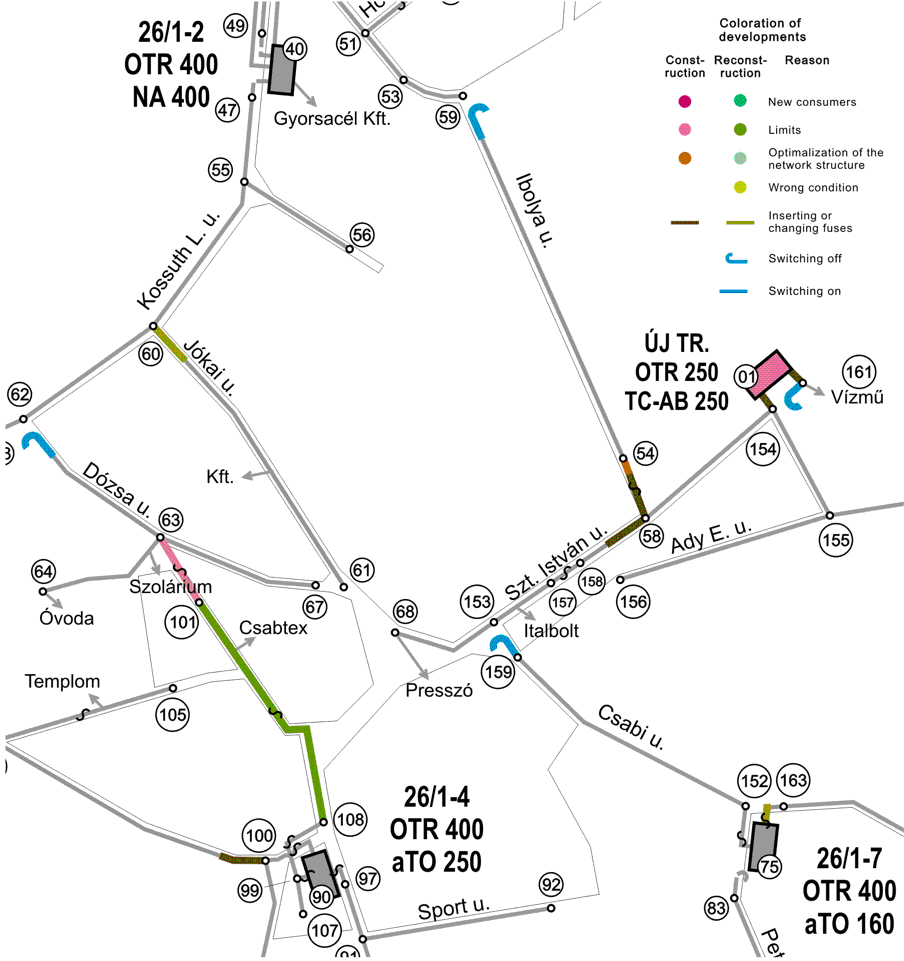
Figure 2 Overviewable presentation of network development
- It provides an optimal base for the daily tasks of answering energy demands respectively for the construction plans.
- It forces the responsible personnel (area managers)
- to view the network as a whole co-operating system, not as many independent transformer districts.
- to think over the options to solve the problems at the present and emerging in the future
- Overview network map is made that shows the structure of the co-operating network. On this map only the most important parameters of the transformer stations and lines are shown that ensures:
- the ease of overview of the structure of the whole network
- the ease of evaluation of the results
- the ease of supervision of the planning work
- It contributes to decrease the number of the consumers’ complaints.
3. Is the profit of strategic planning measurable?
Yes. Some advantages result in direct savings. Some examples:
Study A)
During one of our examination the supply of a new consumer area had to be solved. The already finished construction plan prescribed to build two new transformer stations.
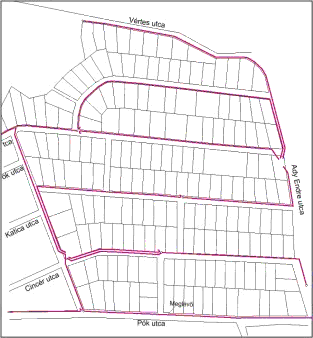 Solution in the construction plan
Solution in the construction plan
After having the results of simulation on our network model it was cleared that one new transformer station was enough to supply the area in question in case we take into consideration the co-operation possibilities of the neighboring hardly loaded transformer districts.
It is understandable that the construction planners could not do it as there was no available overview map about the whole co-operating network and they did not have a tool to handle this co-operation. That is why they could not judge how much power could be put onto the neighboring transformer districts. The direct savings were approx. 18 000 Euro.
During also this examination a 50 kW demand was not possible to satisfy using the existing network. Without simulation only laying of a new 250 m long cable could solve the problem safely. After simulation knowing the reserves of the network it turned out that reconstruction of a 205 m overhead line is enough for the solution. The direct savings were approx. 14 500 Euro.
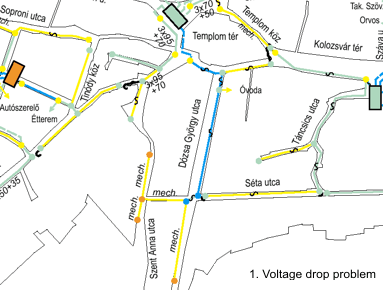
At another place of the same network far from the supplying transformer there were wrong voltages measured. Lacking the simulation results of the whole network only the construction of a new transformer station could solve the problem.
After simulation of the whole co-operating network construction of 73 meter overhead line and appropriate change in switching configuration of the network proved to be the best solution. The direct savings were approx. 14 500 Euro.
Only from these examples the total direct savings were approx. 47 000 Euro for the utility not to speak about the other indirect benefits (minimal investment need, minimal losses, minimal voltage drops, maximal utilization, maximal free capacity, etc.)
Study B)
During the examination of another network only by the appropriate changing the actual switching configuration the exchange of an overloaded transformer and the reconstruction of the transformer station could be avoided. The direct savings are approx. 11 600 Euro.
Study C)
An increased energy demand of a consumer could not be supplied from the existing network because of very poor voltage drops. So the utility laid a 740 m long cable directly from the transformer. Taking into consideration that because of the wrong voltages a new transformer station should inevitably be constructed much closer to the consumer in question laying that long cable could have been avoided. Direct savings would be approx. 36 000 Euro with earlier basic plan.
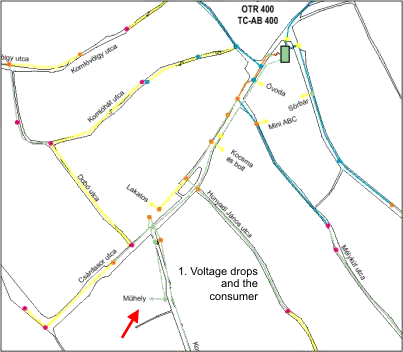
And so on ...
Why do not we suggest long term development decisions?
The loads and their structure in the future cannot be predicted precisely. By the way there is no sense in making decisions much more before it is really necessary.
But examination beyond the short term decision making period (without proposal) is necessary to be able to analyze the effects of the short term development steps, respectively to filter out the solutions for only short term or for leading into dead end.
» Top


